The courtyard of SLAG&RX becomes a threshold space in Dumitru Gorzo’s “Inhabitance”, an outdoor sculpture exhibition. On West 19th Street, the Romanian artist has assembled a forest of carved wooden forms that speak to ancient conventions and contemporary sculptural practice. The installation operates as a synthesis of sorts, or as what the artist calls a hybrid between woods and book, offering a landscape where viewers move between competing narratives of memory and material presence.
Gorzo’s background as a founding member of Romania’s Rostopasca movement informs his body of work, which draws from what the gallery describes as “primitive and modernist art to classical and folkloric traditions.” The sculptures, crafted over several months through meticulous cutting, carving, and painting of wooden planks, resist easy categorization. They appear simultaneously totemic and playful, ancient and immediate, evoking the wooden poles that grace gates and historic structures in Gorzo’s native northern Transylvania, all while asserting their own presence in the urban courtyard.
The installation’s central tension lies in its relationship to drawing, which, for Gorzo, transcends the representation of specific subjects, and instead serves as a means of questioning the conceptual potential of different forms. These three-dimensional works come from his drawing practice and translate the spontaneity of mark-making into carved wood and applied pigment. The vertical forms, many reaching human height or even taller, carry the gestural quality of drawn lines. Throughout, they claim their material weight and presence in space.
Martin Heidegger’s concept from his celebrated essay The Origin of the Work of Art provides a framework for understanding Gorzo’s achievement here. For the former, the artwork functions as a thing that opens a world while situating itself in the earth, creating tension between revelation and concealment. “Inhabitance” exemplifies this idea through the rough materiality of carved wood, layered pigments, and archaic forms that highlight the contrast of the metaphysical of myth, memory, and folkloric tradition—and the physical reality of carved timber and applied paint.
The sculptural forms themselves resist singular interpretation. Some suggest anthropomorphic figures with mask-like faces and elongated limbs, while others appear more abstract, their surfaces covered in geometric patterns or organic shapes that recall both decorative and symbolic systems. The use of bold colors (think deep blues, vibrant reds, and earthy browns) atop the natural wood grain creates a visual dialogue between the material’s origins and its transformation through human intervention. These painted surfaces don’t mask the wood’s character but emphasize it, allowing the grain and texture to pop while adding additional layers of cultural and personal meaning.
The installation’s outdoor setting proves central to its impact. Unlike the controlled environment of a gallery interior, the exterior space allows Gorzo’s sculptures to exist in relation to changing light and weather. The works appear to grow from the stone pavement like a displaced forest, serving as a personal homage to the rural environment of his native northern Transylvania. That said, they don’t function as nostalgic representations of a lost homeland; rather, they engage the current moment on their own terms.
This complexity, or the way these works exist simultaneously in multiple timeframes, reflects Gorzo’s broader artistic project. Born in Ieud, Romania in 1975, he has spent his career moving among genres, platforms, and media, and participating in international exhibitions from the Venice Biennale to the Istanbul Biennial. His work consistently resists strict categorization, often revealing hybrid forms that bridge traditional craft practices and modern art discourse.
The viewing experience of “Inhabitance” unfolds through movement and duration. Unlike traditional sculpture exhibitions where individual works command discrete attention, Gorzo’s installation functions as an environment to be navigated. Viewers move between the vertical forms, discovering new relationships and perspectives as they traverse the courtyard. The works create intimate spaces and broader vistas, moments of enclosure and openness that mirror the experience of moving through an actual forest.
The relationship to “creatures of family lore,” as the gallery notes, emerges not through literal representation but through the works’ ability to embody qualities of presence and animation that exceed their material reality. These sculptures carry what might be called a totemic quality in that they seem to inhabit the space rather than merely occupy it. Their surfaces, worked through months of cutting, carving, and painting, bear the traces of the artist’s sustained engagement with the material, culminating in what Heidegger would recognize as the revelation of both the artist’s world and the material’s earthly foundation.
“Inhabitance” demonstrates Gorzo’s ability to translate the intimacy of drawing into the public scale of installation. The result is neither ethnographic documentation nor abstract formalism, but something more complex—a practice that acknowledges its roots, yet asserts new possibilities for sculptural meaning. The exhibition’s title points to this quality of dwelling that distinguishes this project from more formal sculptural investigations. The works don’t simply exist as objects to be observed but as presences that transform the courtyard into a different kind of space. And in the context of Manhattan’s rhythm, Gorzo’s carved wooden forms offer a temporality all their own, one marked by the slow processes of growth and craft over the acceleration of daily life.
The exhibition “Inhabitance” by Dumitru Gorzo took place at SLAG&RX, New York, NY, USA, from June 26 to August 16, 2025.
POSTED BY
Charles Moore
Dr. Charles Moore is a New York-based author, curator, and art critic whose work explores abstraction, color theory, and social justice through a critical and curatorial lens. He earned a master’s i...
charlessmoore.com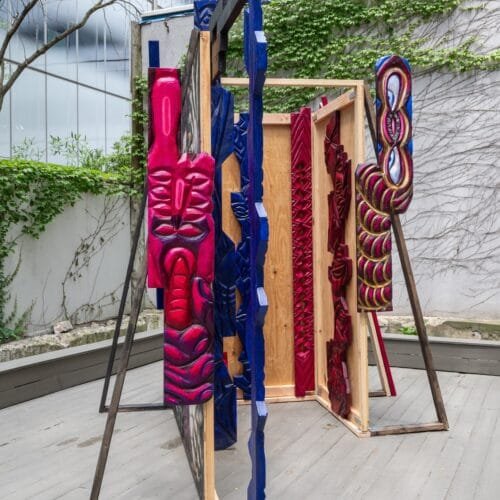
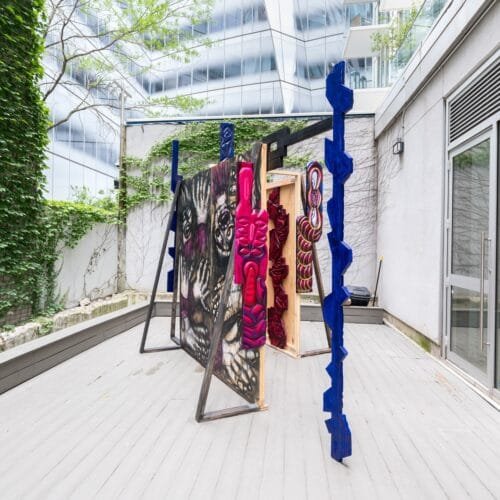
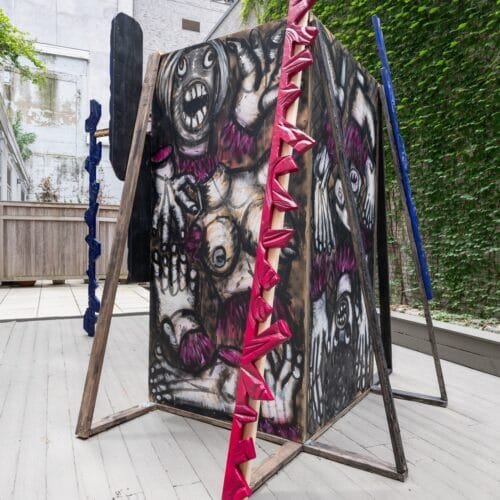
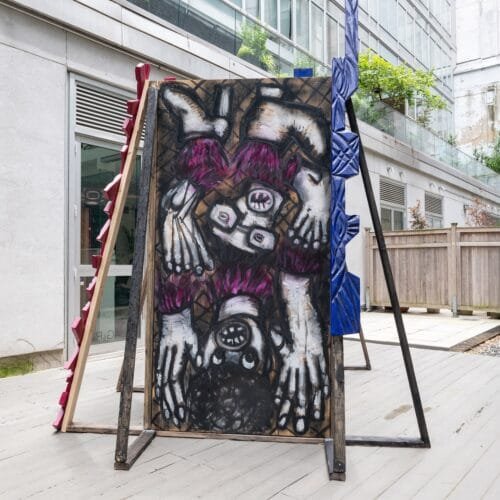
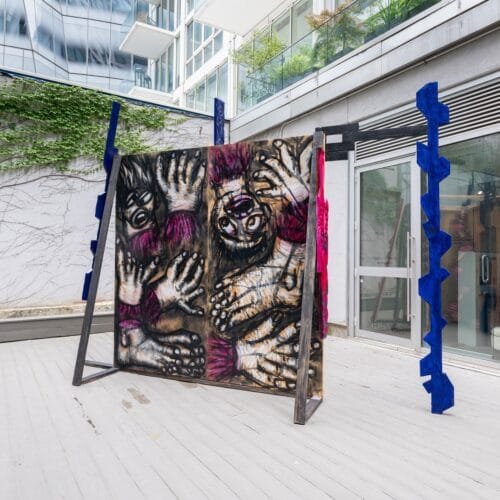

Comments are closed here.